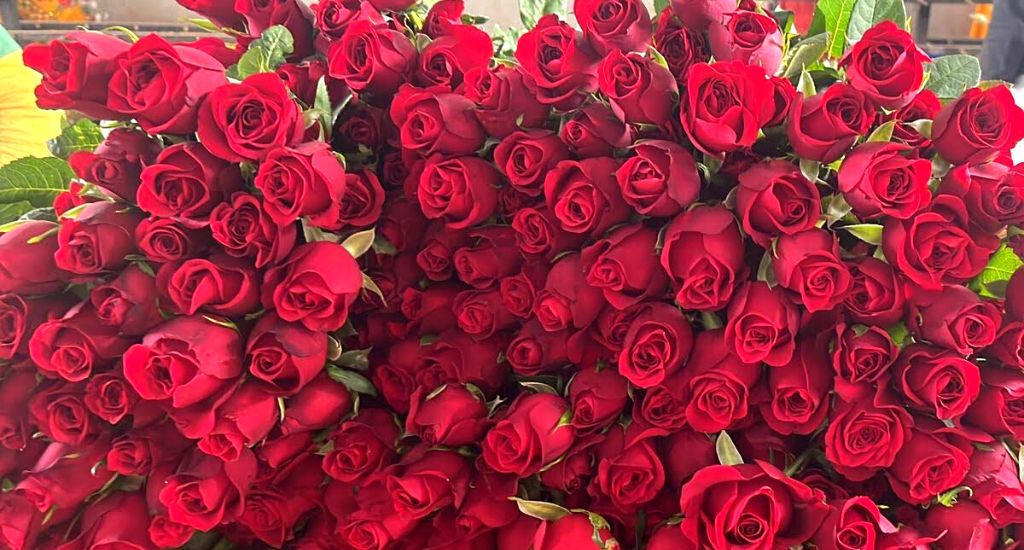
Flower farming is no bed of roses
Welcome to the world of Dutch roses and those who usher brief moments of joy in our lives—the growers.

Welcome to the world of Dutch roses and those who usher brief moments of joy in our lives—the growers.
Carmine red is perhaps the colour of the rose you will give to your loved one this Valentine’s Day. But as you plan your grand gestures for this day that celebrates love, here’s a little something to make you stop and smell the roses.
During Valentine’s season, rose growers typically notch between 20 to 25% of their total revenue. And one of the hotspots is Maval, a hilly terrain in the Western Ghats, dotted with dome-shaped greenhouses housing thousands of rose bushes.
Spread over 350 hectares, these climate-controlled poly houses mostly grow Dutch roses in ten different colours, the most popular – and so most prevalent here – being carmine red.
Rose growers of Maval in Pune have a name for their premium variety. It’s called Top Secret. Yellow is called Gold Strike, pink is Revival, creamy pink is Sweet Avalanche, white is White Avalanche, bicolour is Sovereign and the list goes on.
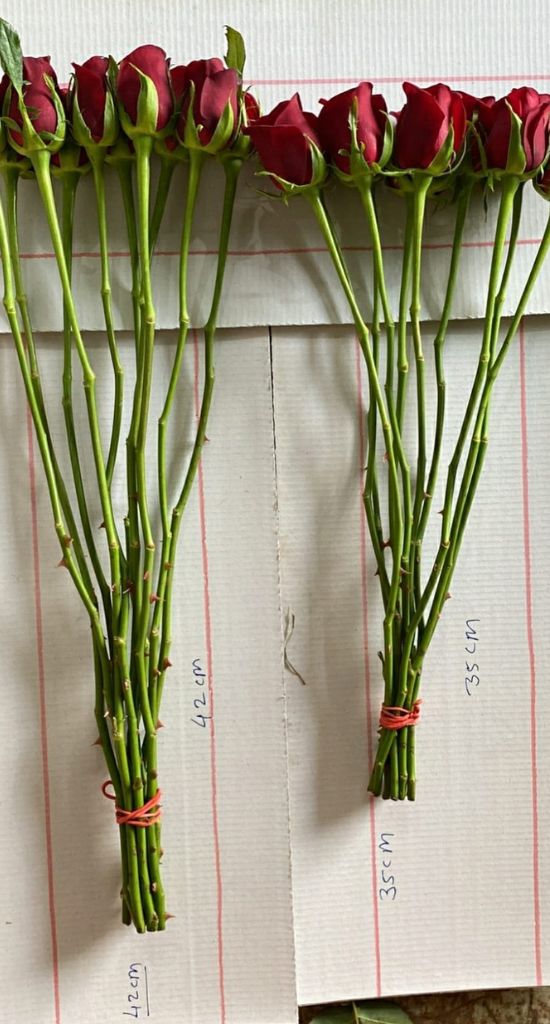
“The Top Secret variety – with its 6 cm bud size and 70 cm stem fetches the most – but then we have the lesser bud sizes too,” said rose grower Priyadarshini Vilas Mankar (52) who has a three-and-a-half acre farm in Talegaon Dabhade with worker quarters, pre-cooling room and flower sorting area.
Mankar is one of the many small-scale flower farmers in Maval. She has degrees in science and education, but the scent of roses drew her into floriculture farming.
“I acquired three and a half acres, attended a workshop organised by the National Horticulture Centre, took a bank loan of Rs 44 lakhs to establish my farm and returned it within seven years,” she said.
She has done so well, in 2016 the state government honoured her with the Vasantrao Naik Krishibhushan Award, a prestigious award for farmers.
Some 60 villages in the area, which once grew paddy, have taken to floriculture – giving livelihoods to around 350 families.
“The poly houses, ranging from 10 gunthas (quarter of an acre) to an acre, are solely run by family members with each member taking responsibility for a particular task,” said Taluka Agriculture Officer, A Pirjade.
It was way back in the early 90s when the Tatas established their Oriental Floratech in Pune and Dutch roses first came to India. Similar ventures came up in Hosur in Bengaluru too. But today, only a handful of corporate flower growers exist.
The majority of floriculture businesses in Maval are now run by the former employees of the corporate growers and non-farmers.
Mukund Thakar (41) was a paddy grower before he turned to roses. Initially he began with a poly house on a 20 gunthas plot in Yelse village. He then expanded it to two acres. Now he has a 15 acres floriculture business.
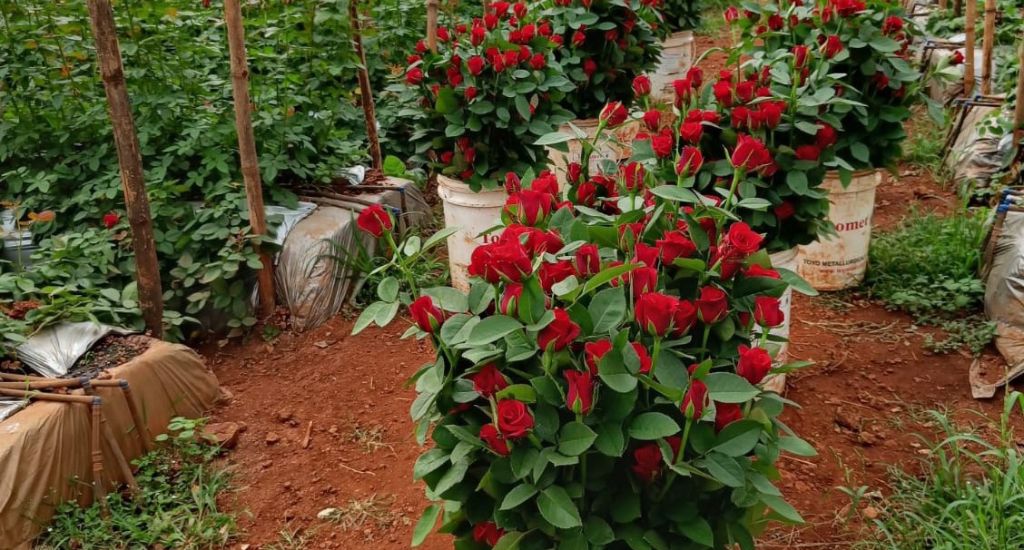
It’s their bulbous buds, thick stems and longevity that have made Dutch a favourite in India. Its cultivation is increasing day-by-day with Maval presently accounting for 300 hectares.
Roses bloom at 25 to 27 degree Celsius and if the outside temperature is more, then one has to use sprinklers and showers to keep the poly house cool. Flowers are harvested early in the morning, pre-cooled, then cooled and readied for the market.
Bud caps are generally placed on the bud when they are of pea size in order to prevent them from opening prematurely. This helps to increase the bud size and shape to meet customer demand.
A highly resource-intensive enterprise, floriculture necessitates large investments. For instance, a poly house spread on an acre costs around Rs 60 lakhs, of which the farmer receives a subsidy of 50 percent from the National Horticulture Board. Then, there are costs involved in setting up a cold room, living quarters for the workers as well as a processing centre.
“An acre under greenhouse cultivation can grow 35,000 rose plants and one can get around 2,000 flowers per day per acre. That adds up to over seven lakh flowers per annum per acre,” said septuagenarian Malharrao Dhole, a former secondary school teacher with a four acre rose farm.
Dhole, who is also secretary of the 115-member strong Talegaon Floriculture Park Flower Growers Association, took to growing roses in 2005 in poly houses, after getting a whopping Rs 1,20 crore loan.
His floriculture business did so well, he was able to pay it back within five years.
“This Valentine’s season I hope to notch a sale of 1.50 lakh roses, of which red alone will account for 70,000,” said Dhole.
During the first wave of Covid when the country was under total lockdown, flower growers of Maval suffered the most with their entire businesses collapsing.
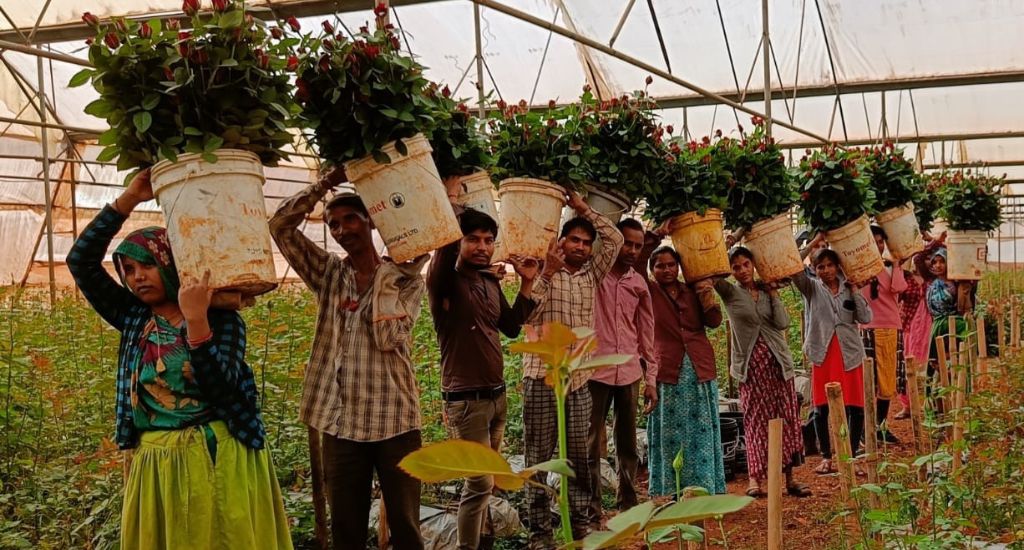
Each day, flowers were harvested and destroyed. The workers hailing from Jharkhand, Chhattisgarh and the Vidarbha region had returned to their homes. Many flower growers defaulted on their EMIs.
Then came Cyclone Nisarga of June 2020 which destroyed poly houses spread over nearly 100 acres.
“The 18 per cent GST on fertiliser, pesticide and growth promoters has added to their miseries,” said floriculture consultant Dashrath Pujari (49) who provides consultancy to 16-odd flower growers.
Dutch rose growers in Maval had plans to export 80 lakh stems of Top Secret this year, but the introduction of 18 percent GST on freight charges in September last year proved to be a dampener.
Many backed out hoping to woo the domestic market instead.
“This year for Valentines, farmers of Maval were able to export some 50 lakh rose stems which went to Australia, Japan, Netherlands, Malaysia, Singapore and Dubai, of which 10 lakh alone was from our members who grow it on 50 acres,” said Thakar, president, Pavana Flower Growers Union.
Rose growers are in a comfortable place due to a very strong and growing domestic market.
“The main advantages of domestic markets are its upfront payment by the buyers and a better price,”said Praveen Sharma of Indian Society of Floriculture Professionals.
Exporting is not easy. There are freight formalities, airline space to pre-book, then the risk of delayed flights due to the Valentines rush and losses if a consignment is rejected.
But there’s more.
Indian Dutch roses are less competitive in Europe compared to east African countries like Kenya, which has emerged as a leading rose grower. They get an advantage not only being closer to Europe, but Kenyan flower growers get preferential tariff rates and freedom from quota restrictions.
They also cultivate newer varieties — something Indian flower farmers don’t do.
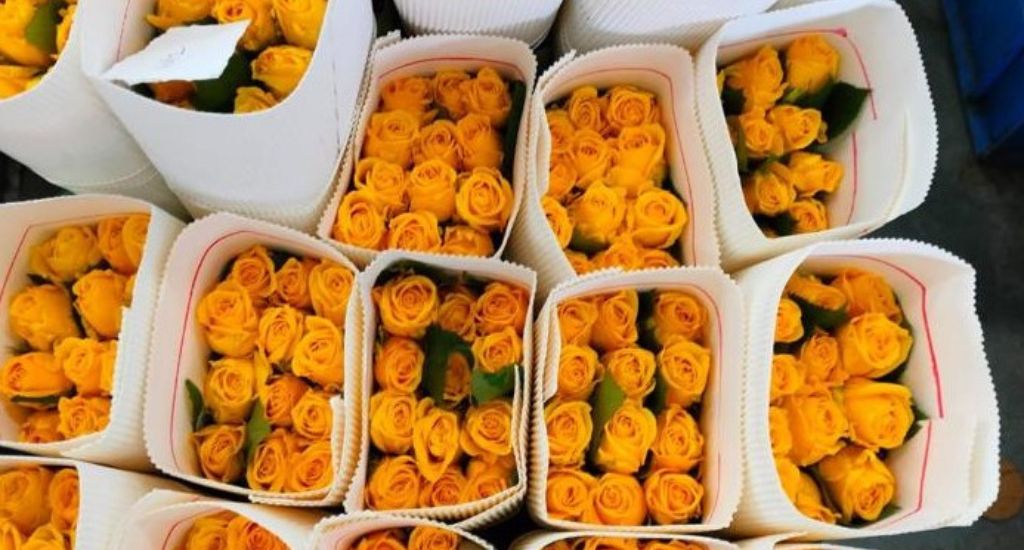
“Did you know that the best-selling Top Secret variety was introduced some 14 years back and ever since then hardly any new varieties have been introduced in India?” said Pujari.
Resting on one’s laurels, never mind roses, will not give Indian flower farmers an edge in the international arena.
But they aren’t too bothered.
The Indian market is booming.
And it is not just Valentine’s Day either. There is Easter, Mother’s Day, Father’s Day, Teacher’s Day, never mind the biannual wedding season and the umpteen religious occasions in between.
Add it up and the future of the Indian domestic market remains rosy.
The lead image at the top shows a bouquet of blooming Carmine red roses (Photo by Hiren Kumar Bose)
Hiren Kumar Bose is a journalist based in Thane, Maharashtra. He doubles up as a weekend farmer.